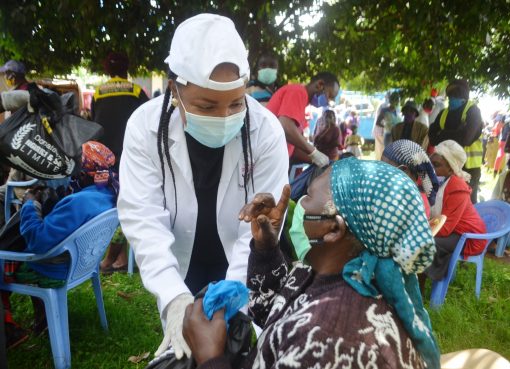Kenya needs to urgently scale up its efforts to improve complementary feeding to meet its own targets as well as the global standards, new research reveals.
Complementary feeding is the practice of providing infants and young children with a variety of nutritious and safe foods, while continuing to breastfeed.
The Ministry of Health, Global Alliance for Improved Nutrition (GAIN) and UNICEF have published a special issue in Maternal & Child Nutrition that outlines the barriers and solutions for optimal child nutrition in Kenya
The issue features four new research studies as well as expert commentary, providing context-specific evidence and practical recommendations including a tailored roadmap for improving complementary feeding in Kenya.
In a press statement, Dr Ty Beal, Research Advisor at GAIN, said that the barriers to optimal complementary feeding vary by location and require tailored approaches, which should be feasible given the decentralized government in Kenya.
Veronica Kirogo, Director of Nutrition and Dietetics Services, Ministry of Health noted that the research provides an evidence base to guide policies and programs to improve young children’s nutrition nationally and regionally.
“Our research collaboration with UNICEF and GAIN proposes a roadmap for operationalizing a national complementary feeding strategy that is multi‐sectoral, well‐coordinated, and tailored to the regional needs and priorities in Kenya,” she said.
Dr Ismael Teta, Chief Nutrition, UNICEF Kenya Country Office said that good nutrition in early childhood provides a strong foundation for growth, health and development.
“This special Issue outlines practical actions Kenya can take to promote adequate, safe, and nutritious complementary foods for infants and young children,” he said.
Dr Teta assured of UNICEF’s support to the government in translating the findings into impactful policy and programs that give every child the best start in life.

The main findings and highlights of the research show that complementary feeding diets in Kenya are often inadequate in iron, zinc, calcium and animal-source protein, which can lead to poor growth and development.
Another finding is that there exist local, nutritious foods that are relatively affordable and can help fill the nutrient gaps, such as small, dried fish, dark green leafy vegetables, liver, milk and eggs.
According to the research, increasing livestock production efficiency and improving trade and transportation infrastructure can also help improve affordability of highly nutrient-dense animal source foods.
The research findings note that caregivers’ barriers to optimal complementary feeding include food affordability, perceived food safety and health benefits, child acceptability, ease of acquisition, convenience to prepare, child illnesses and seasonal variations in food availability.
Kenya, despite being a fast-growing economy with a constitutional right to nutrition and health for every child, has made little progress on this front, where most children do not receive a diverse and adequate diet and suffer from high burdens of micronutrient deficiencies and anemia.
This limits the potential of the next generation and holds back the country’s economic development.
The special issue is available online and can be accessed for free. It can also serve as an essential resource to inform and inspire policymakers, program managers, health workers, researchers, and donors to take action to improve early childhood nutrition in Kenya.
The Global Alliance for Improved Nutrition (GAIN) is a Swiss-based foundation that works with government and others stakeholders to transform food systems and also address malnutrition while UNICEF promotes the rights and wellbeing of every child, focusing special effort on reaching the most vulnerable and excluded children.
The World Health Organization (WHO) recommends that infants start receiving complementary foods at 6 months of age, in addition to breast milk.
Initially, they should receive complementary foods 2 to 3 times a day between 6 and 8 months, increasing to 3 to 4 times daily between 9 and 11 months, and 12 and 24 months.
By Wangari Ndirangu





